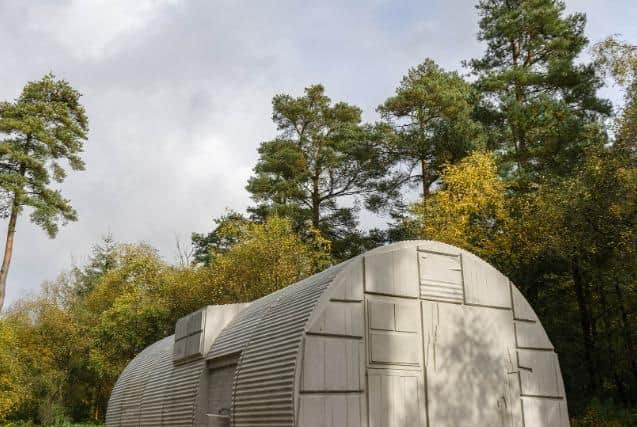400kg cast iron artwork tribute to cycling and mining heritage could be installed at Dalby Forest in Yorkshire
Forestry England, which has generated controversy with its previous plans to erect public artworks in Dalby Forest, has applied for consent to install a 400kg cast iron artwork tribute to cycling and the area’s historic mining operations in the Courtyard, at Low Dalby.
The proposal which is titled Corridor and will be considered by the North York Moors National Park Authority in the coming months, is part of a drive by the commission to increase visitors to the 8,500-acre woodland near Pickering by establishing it as a high quality arts venue with thought-provoking sculptures.
Advertisement
Hide AdAdvertisement
Hide AdThe plan comes three years after Forestry England revealed plans to install a 2.3m-high sculpture of a winged sheep by North Yorkshire sculptor Fiona Bowley at the forest’s Jerry Noddle viewpoint, as an additional focal point for visitors and a place to stop and shelter from strong cold winds.


Numerous residents of the area objected when in 2018 Forestry England launched a move to install concrete sculpture Nissen Hut, by Turner Prize winning artist Rachel Whiteread in the heart of the forest, with it being dubbed “one of the ugliest buildings ever”.
Other sculptures in the forest include one by celebrated North-East artist Ray Lonsdale commemorating the role of women who worked in Britain’s woodlands during the Second World War.
No comments have yet been received from residents over the proposed industrial-looking sculpture, featuring a pattern of octagonal studs drawn from studies and observations of bicycle tyre tracks which have been formalised and rendered as an architectural form. It would be sited in the Forest Garden, alongside useful and edible plants.
Advertisement
Hide AdAdvertisement
Hide AdIn its application, Forestry England stated: “The piece draws on and refers to its location by means of literal representation – a bicycle tyre, by historical reference – the medium of iron; and ambiguously by the form not only being a cycling reference but also in that its shape is suggestive of a de-limbed tree.”
The sculpture is set to be cast in iron at Hargreaves Foundry in Halifax, using the ‘sand cast’ method associated with industrial casting processes rather than the fine art casting technique of ‘lost wax’.
The application states: “By virtue of its medium, the column pays reference to the Industrial landscape, still evident in part, of the North York Moors. Iron has been extracted and worked in this region from the Iate eighth century BC.
“It was an essential element for the Cistercian Abbeys at Byland and Rievaulx and this area witnessed the ‘iron rush’ of the 19th and early 20th centuries where, in particular, Rosedale and the Esk Valley were transformed by industrialised extraction, burning, and transportation of high yield ironstone.”
